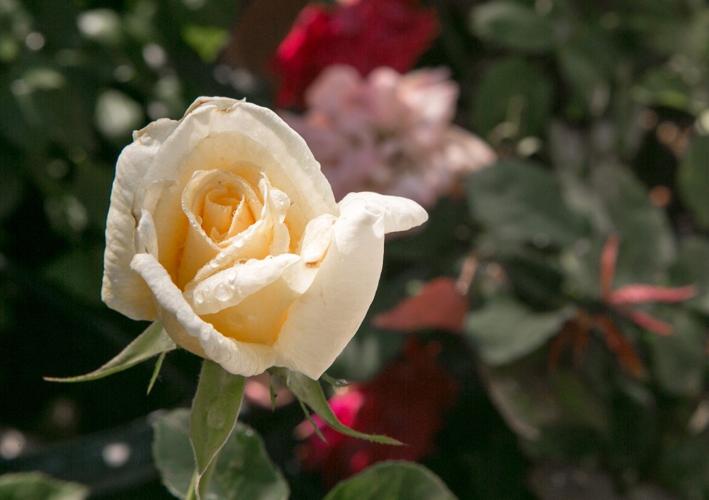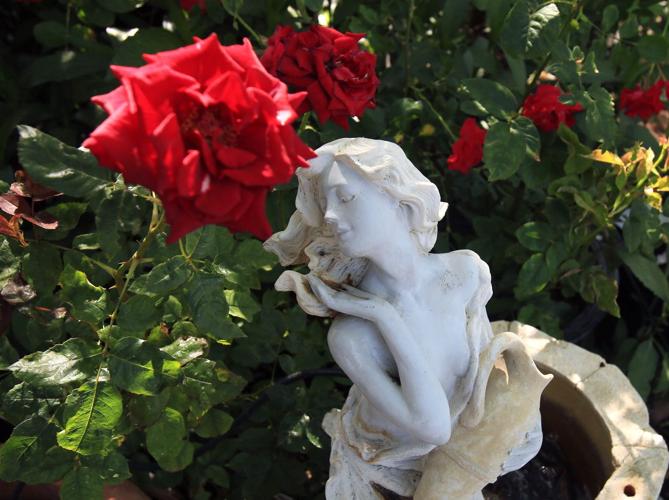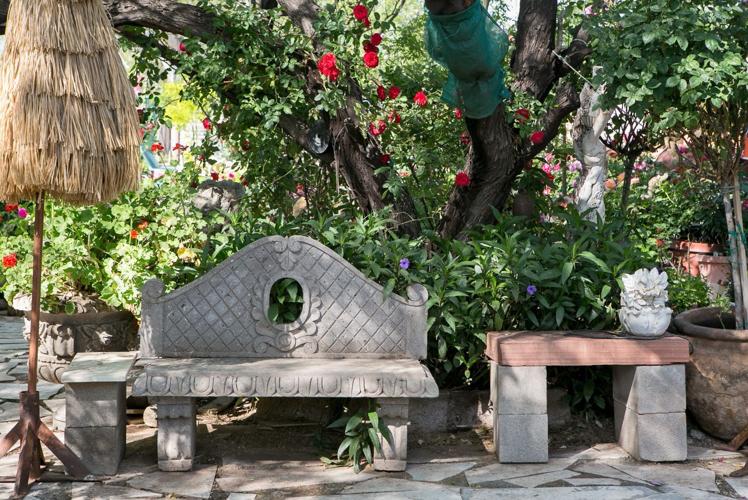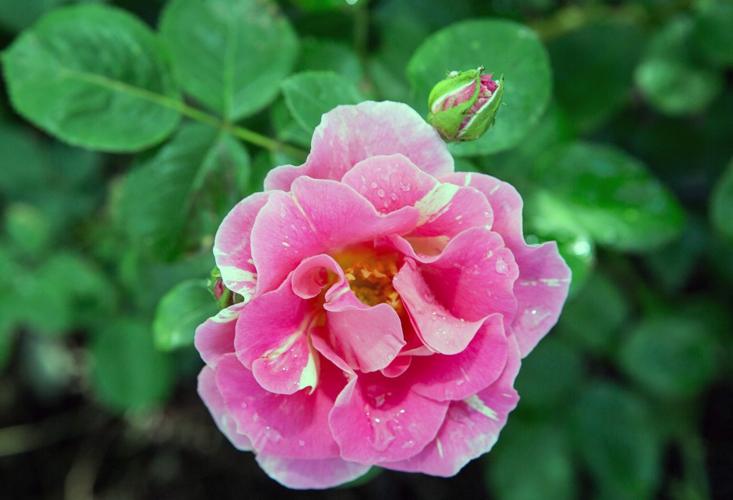Call Ecaterina Lindstrom a rosarian extraordinaire.
At the very least, the owner of Ecaterina’s A Touch of Europe beauty salon is an avid collector of roses, which goes a long way to making her backyard a feast for the senses.
The yard, part of a third-acre lot, is actually a riot of caged fowl and roaming tortoises, mesquite and oleander trees, potted perennials, an aquaponic tomato garden, a fish-filled pond, colorful bird houses, classical and religious statuary and a former steel pool turned into an enclosed sunken entertainment room.
But on a recent April morning, what’s most noticeable are the thousands of roses, their scent filling the air, their petals of red, white, pink, lavender, yellow and orange bright against the greenery.
It’s the perfect setting for the annual private open house that she and her husband, graphologist John, host this time of year for more than 200 clients and friends.
Ecaterina reckons she has at least 250 rose plants on the couple’s northwest-side lot. Nearly all are the type she likes: fat, multi-petaled flowers with strong fragrance.
She walks around sniffing several, including “Christian Dior,” “Double Delight” and “Pope John Paul II” varieties.
“My favorite is ‘Black Magic,’” says Ecaterina as she caresses a flower so deep red that each petal looks tinged in black. “It feels like velvet.”
The garden has been 30 years in the making after the couple, who met and married in Ecaterina’s home country of Romania, moved to Tucson, where John is a native.
She says she’s always gardened, but didn’t tackle roses much, especially when she lived in places with little room. “In Romania, my mom had a few of them,” she remembers.
Raising three children and running a small business didn’t give Ecaterina much time to have anything but a modest garden. But she dug in right away, pulling out the hip-high weeds that covered the backyard and adding several trees for shade from the desert sun.
About 15 years ago she decided to tackle roses. And she was hooked.
“You just start buying flowers one by one,” she explains. “I don’t know how it happens.”
She scoffs at the idea that roses are fussy plants. “Just give them water,” she advises, particularly in the summer. Check the Internet to learn how to deal with bugs and mildew.
They will reward you with two bloom seasons, in the spring and the fall. “You cannot go wrong with roses,” she says.
Trial and error were her teachers, Internet resources her guidebook.
The first failures came with a good lesson: Don’t plant roses near trees.
“We have so many trees that they would choke the (rose plant) roots,” Ecaterina says. She instead put roses in pots, placing some of them in the same spot where plants in the ground died. They’ve thrived ever since.
“They’re doing amazing,” she says.
Ecaterina admits to not following what she calls “the rose law,” which dictates several yearly feedings on a regular schedule, twice-a-year prunings, much irrigation and vigilance against pest and disease.
Instead, she is methodical about her watering, but doesn’t fertilize as often as it’s recommended. She tends to trim off the tops of her roses with little regard to bud eyes or cane length.
Actually, she tries to trim her plants as little as possible.
She will deadhead roses — remove the blooms that are spent — to encourage the plants to make more flowers. To get ready for her spring party, she snipped 100 flowers in one day and she had about 200 more to go.
She also will cut rose canes from a bush to replant and grow into another one. “The most fun I have is propagation,” she says.
Growing cuttings is the main way she adds rose plants to her garden, although she also buys a few new varieties every year.
She avoids bare root roses, with which she’s had only “50 percent” success, she says.
Other than those modest trimmings, Ecaterina avoids even the time-honored delight of bringing flowers into the house. She refuses to snip blooms that will sit in a vase.
“I cannot cut them off,” she says. “The roses live longer when you keep them on the plant. I want to extend their lives.”
The outdoor landscape does not go to waste. Ecaterina says she spends “90 percent” of her time at home in the garden. About 10 hours a week is taken up with irrigation and other gardening maintenance. The rest of the time she and John sit back and enjoy the floral fragrances, the bubbling of fountains, the splashing of koi, the squawks of chickens, pheasants, ducks and pea fowl and the strains of Romantic orchestral music that they pipe in for the pleasure of both plants and humans.
“After all,” she says, “why do we have flowers in our yard? To look at them and to enjoy them.”










